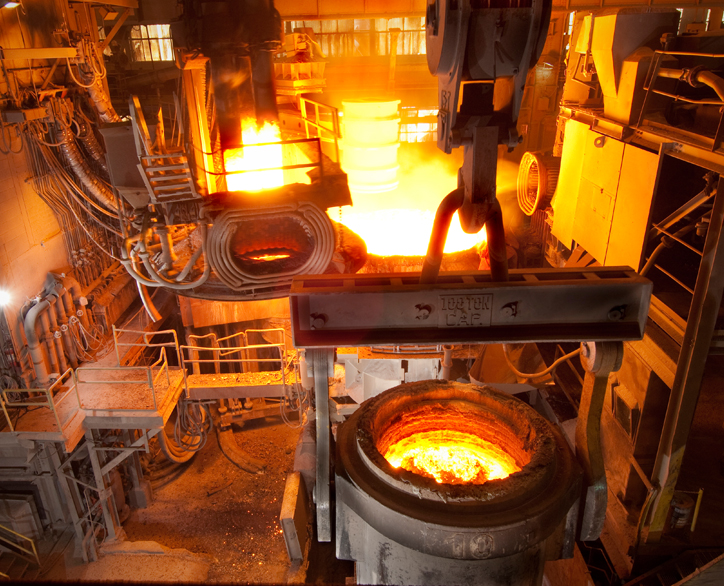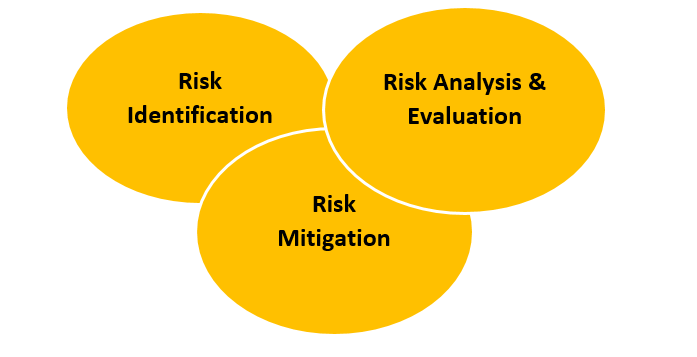Risk assessment is of crucial importance to businesses. Business risks can sometimes create hazards that are detrimental and potentially lead to the total devastation of your business. They can be extremely serious or at times subtly disguised. A company leader who fails to anticipate and prepare for risks may end up having to fix damages that are expensive and time-consuming, or worse, lose everything.

Do you ever wonder, what is the worst that can happen to your business without risk assessment?
Here is a case study; At a Steel Mill in Nigeria (company’s name withheld). In 2015, a supervisor’s attention had been drawn to the Foundry Pouring Ladle that carries molten metal from the melting furnace to the holding furnace. The ladle had suddenly started making shrieking awkward noises when in use and this was far from the usual. The supervisor had immediately alerted the engineers seeking urgent technical care as two maintenance schedules had been missed in a row. Everyone was certain this was a problem that typical maintenance could fix.

However, the engineers analysed the risk and found it was rather a complicated technical issue and needed an expert’s evaluation. The expert engineer had examined and had recommended they purchase a new one. Further use of the faulty ladle could lead to a massive explosion. In the past, similar cases had posed a great threat to factory workers, in worse scenarios brought down an entire factory. He strongly advised against patching and managing of the bad ladle.
Getting a new one would not just cost the company money but would require a waiting period of 80days.
Would customers understand the 80days delay?
The management had to make the decision to patch up and continue production whilst they waited for the new one to arrive. Operations continued as usual until one afternoon, a big explosion happened in the furnace. The ladle was carrying the same quantity of red-hot molten metal as before the risk evaluation was done. The explosion created great damage, it had left many factory workers covered in hot liquid metal; this was not a pleasant scene. Only a few survivors emerged from this horrific experience. The explosion equally took the whole furnace, and much equipment in the factory was destroyed.
This was a risk that would have been easily mitigated!
Organizations should always identify the risks that pose a threat to achieving their goals. Note that risks are more than operational hazards and explosions, it covers business, financial, economic, and compliance risks. Managing risks require a company to constantly evaluate their effectiveness, improve their strategy, and maintain strong, interactive relationships with their audience and customers.
The Westsons Risk Assessment Framework

Risk Identification
This is the first step and the most important aspect of the risk management process. During the risk identification process, project managers or business leaders determine risks that could potentially prevent the organisation or project from reaching its set objectives. This stage includes observation, documentation, and communicating risk concerns with the management team.
Risk Analysis & Evaluation
At the point of risk evaluation, project managers and business leaders estimated the outcome of risk and how it can affect the organisation in both the short and long term.
Risk Mitigation
We find that this stage requires the organisation’s leaders to make strategic decisions. They are required to take steps to reduce or prevent the adverse effects of threats and disasters on the business and productivity.

Types of risks that companies face are:
- Operational Risk/Physical Risks: Fire, chemical spills, accidents and technology risks
- Business Risk: Human risk, strategic risks such as bad investments
- Economic Risk: Markets fluctuation and reduced sales
- Compliance Risk: Non-compliance that can result to penalties.
- Security and Fraud Risk: Data breaches, identity theft and payment fraud
- Financial Risk: Loans, debt and interest rate fluctuations.
- Reputation Risk: Unsatisfied customer, product failure, negative press or lawsuit
- Competition (or Comfort) Risk: Increasing competition combined with an unwillingness to change may result in a loss of customers.
While you’ll never completely eliminate business risk, planning ahead for it proactively can help. Awareness is key in helping you save money and time while protecting the trust, reputation, and clientele that you’ve worked so hard to earn.
Westsons can recommend a risk assessment strategy that can help your organisation reach its short and long term goals. This includes staff training, safety checks, equipment, space maintenance, and necessary insurance policies.

